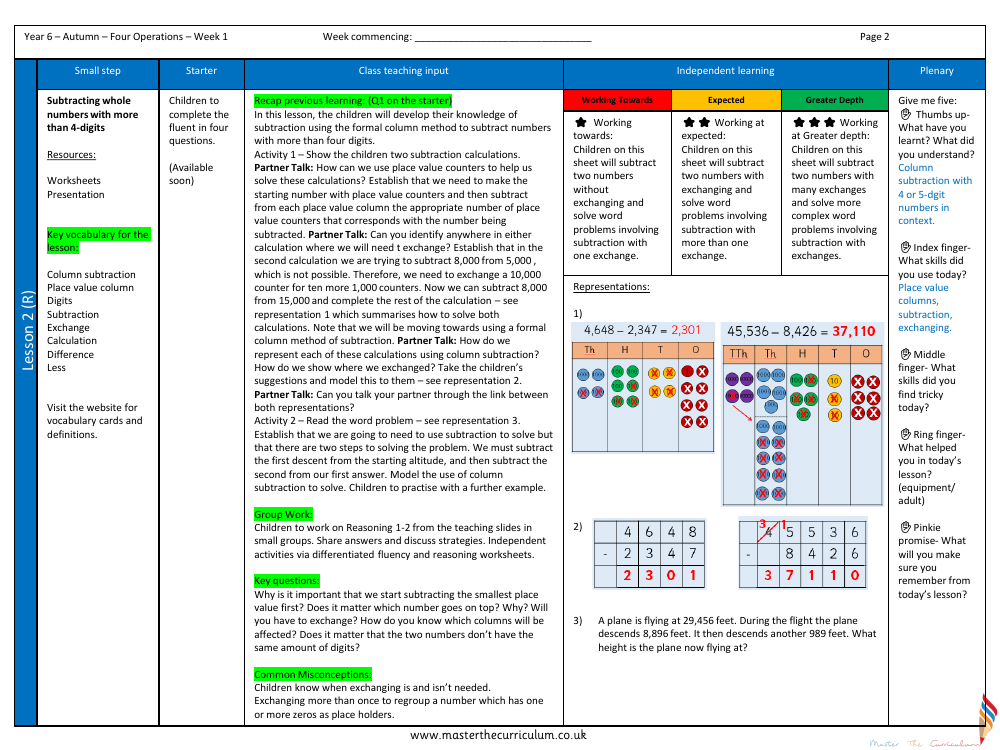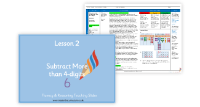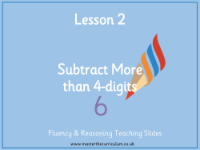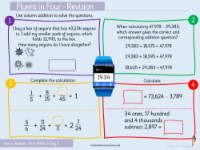Addition, Subtraction, Multiplication and Division - Subtracting Whole Numbers with more than 4-digits - Planning

Maths Resource Description
In the Year 6 curriculum, subtracting whole numbers with more than four digits is a vital skill, and this lesson is designed to strengthen that ability using the formal column method. The lesson begins with a recap of previous learning, ensuring that students are ready to tackle larger numbers. The class is introduced to key vocabulary such as 'column subtraction', 'place value column', and 'exchange', which are essential for understanding the subtraction process. Students are encouraged to use place value counters to visualise the subtraction and to identify when it is necessary to exchange, for example, when subtracting 8,000 from 5,000. This concept is reinforced through partner discussions and modelling the process using representations, gradually moving towards the formal column method of subtraction. The lesson's resources, including worksheets and presentations, are designed to support students in mastering these concepts.
During the lesson, students engage in group work and independent learning, tackling reasoning questions and word problems that require careful subtraction. A key focus is on understanding the importance of starting with the smallest place value and ensuring the correct number is on top during subtraction. Students are also made aware of common misconceptions, such as when and how to exchange correctly. The lesson concludes with a plenary where students reflect on what they've learned, the skills they've used, and what they found challenging. Differentiated activities cater to various levels of understanding, from those working towards the expected level to those who are ready for greater depth, involving multiple exchanges and complex word problems. The lesson aims to solidify students' understanding of column subtraction and prepare them for real-world applications, such as calculating the new altitude of a plane after multiple descents, as presented in the word problem example.



